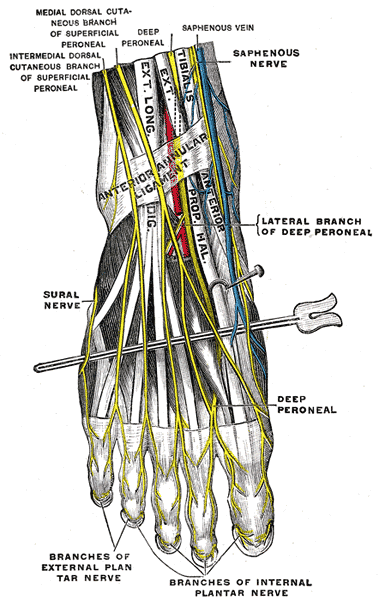The great saphenous vein is also known as long saphenous vein. However, the latter name is not used anymore. The term ‘saphenous’ has its origins in the Greek word ‘safaina’, which means ‘visible’ or ‘manifest’. However, there is another word that is attributed as the origin of the term which is the Arabic word ‘el safin’. Interestingly, ‘el safin’ means ‘concealed’ or ‘covered’, a completely contrary meaning to what safaina in Green means.
The great saphenous vein is the largest, rather the longest vein in the human body. It runs through the leg, all the way from the top of the leg to the bottom. In venous anatomy, the great saphenous vein is a superficial subcutaneous vein.
In simpler words, the great saphenous vein starts at an inch away from the large toes and runs along the leg, upwards along the calves, through the side of the knee, onto the anterior side of the thighs and into saphenous opening.
In medical jargon, the great saphenous vein originates at the foot where the dorsal venous arch merges or meets the dorsal vein of the toe, which is also known as the dorsal vein of the first digit. The vein becomes visible at the medial malleolus. If one looks at the anterior side of the medial malleolus which is just a couple inches above the heels on the inner side of the leg, one would notice the great saphenous vein and it can also be observed by touch to be palpating.
Running up onto the knee, the great saphenous vein passes over the femur bone across the medial epicondyle on its posterior border. The vein runs upwards towards the anterior side of the thigh and enters what is known as the saphenous opening in the fascia lata. The opening along with the vein entering it forms what is known as the saphenous arch.
Being the longest vein in the human body and also a pivotal one in the leg, the great saphenous vein is very significant. It has several tributaries and networks of veins. Some of them are the medial marginal vein, small saphenous vein, perforator veins, tibial veins, popliteal vein and femoral vein among others.
The great saphenous vein is vulnerable to damage. The two most common medical conditions of the great saphenous vein are varicose veins and thrombophlebitis. Although they are relatively serious conditions, they are not fatal. However, when coupled with other medical conditions, both these pathological problems can get more severe.
Varicose veins are caused due to swelling up of key veins in the human body. Veins typically get twisted or there can be some physiological changes to the veins in such a condition. There are many treatments for varicose veins and although they may appear to be very unpleasant, they are not fatal.
Thrombophlebitis is a condition when the great spahenous vein develops a blood clot. This condition is also not life threatening but can lead to a more serious deep vein thrombosis which should be averted with timely medical intervention.
